Do you ever wonder what’s really in that store-bought ground meat?
Take control of your ingredients and elevate your cooking game by grinding your own meat at home!
Not only does this give you the freedom to choose the quality and cuts of meat you consume, but it also allows you to experiment with unique meat blends and non-meat applications.
Ready to impress your friends and family with your culinary skills?
Let’s dive into the world of meat grinders and uncover the secrets to grinding meat like a pro, by understanding how meat grinders work.
In this blog post, we will explore the fundamentals of meat grinding, essential components of a meat grinder, tips for successful meat grinding, creative uses for your meat grinder, and grinding meat safely and efficiently.
Say goodbye to mystery meat and hello to fresh, flavorful, and customized ground meat creations, as we learn how meat grinders work.
Short Summary
- Meat grinding is a versatile process that involves pushing meat through a tube and comminuting it with a fixed plate.
- Manual and electric grinders can be supplemented with attachments to create unique culinary creations from meats, fruits, bread crumbs & more.
- Adopting safety measures such as inspecting cords for damage & unplugging when not in use are essential for safe usage of the grinder.
The Fundamentals of Meat Grinding
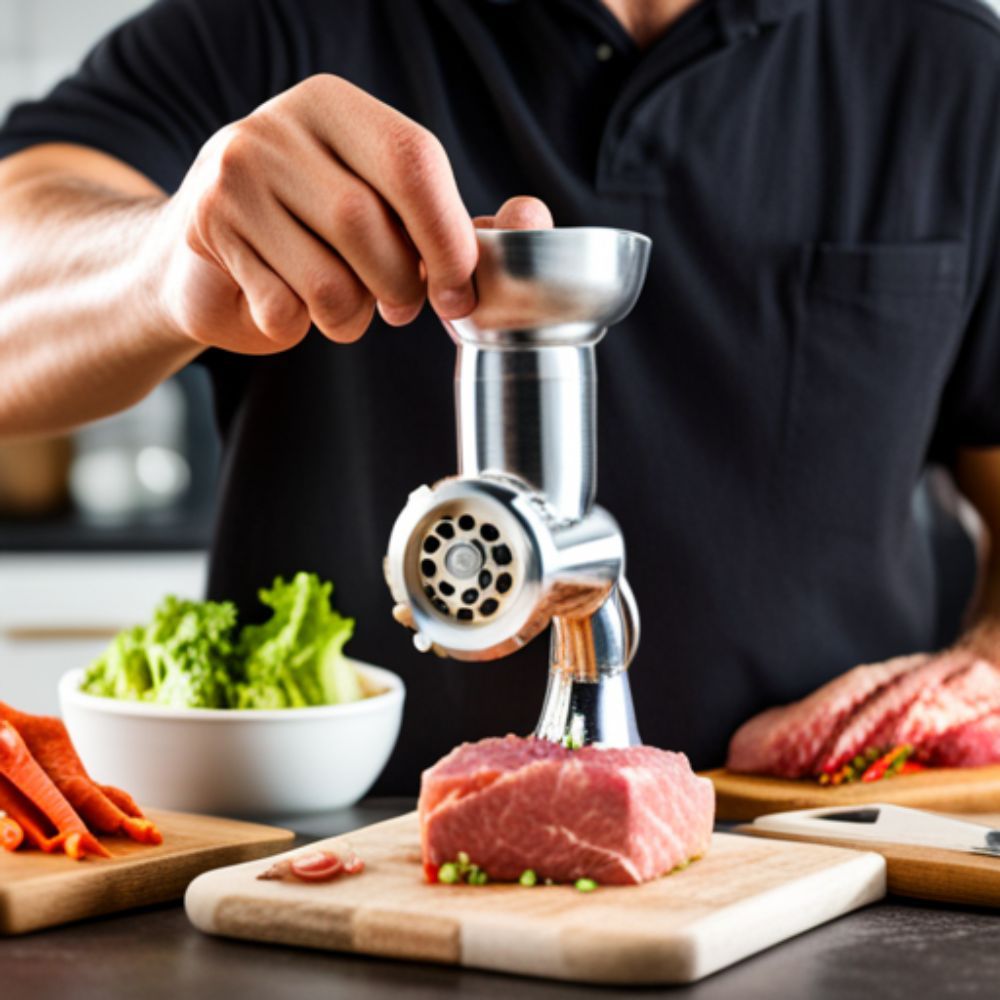
A person using a meat grinder to grind meat
A meat grinder is a kitchen appliance designed to mince meat into small pieces, perfect for creating meatballs, burger patties, and sausages.
This versatile tool makes meat grinder work efficient by pushing the meat through a feeding tube and comminuting it before passing through a fixed plate with perforations, which is how meat grinders work.
Some meat grinder usage tips include using the meat grinder cold, employing the meat pusher, and grinding in small batches to ensure optimal grinding results.
The Grinding Process
When using a meat grinder, the food is processed in the following steps:
- The food is placed in the feeding tray.
- It is then forced downward onto the auger using a plunger or other device.
- The food is pushed forward and comes into contact with the rotating cutting knife.
- It gets cut into small pieces.
- These small pieces are then transported toward the grinder plate.
- They pass through a variety of holes on the grinder plate, depending on the desired level of fineness.
The ground meat is finally released from one end of the casing onto a meat tray. The screw auger keeps rotating, pushing additional food into the grinder.
Remember to use very cold or partially frozen meat for the best results.
Grinder Plate Varieties
Grinder plates play a crucial role in determining the size of the ground meat, allowing the meat to be extruded through holes of varying sizes.
The size of the holes in the grinder plate directly affects the coarseness of the meat, with medium or coarse grinding plates yielding an optimal texture for beef dishes.
Grinder plates are available in a variety of hole sizes, including those specifically used for making sausages.
Essential Components of a Meat Grinder
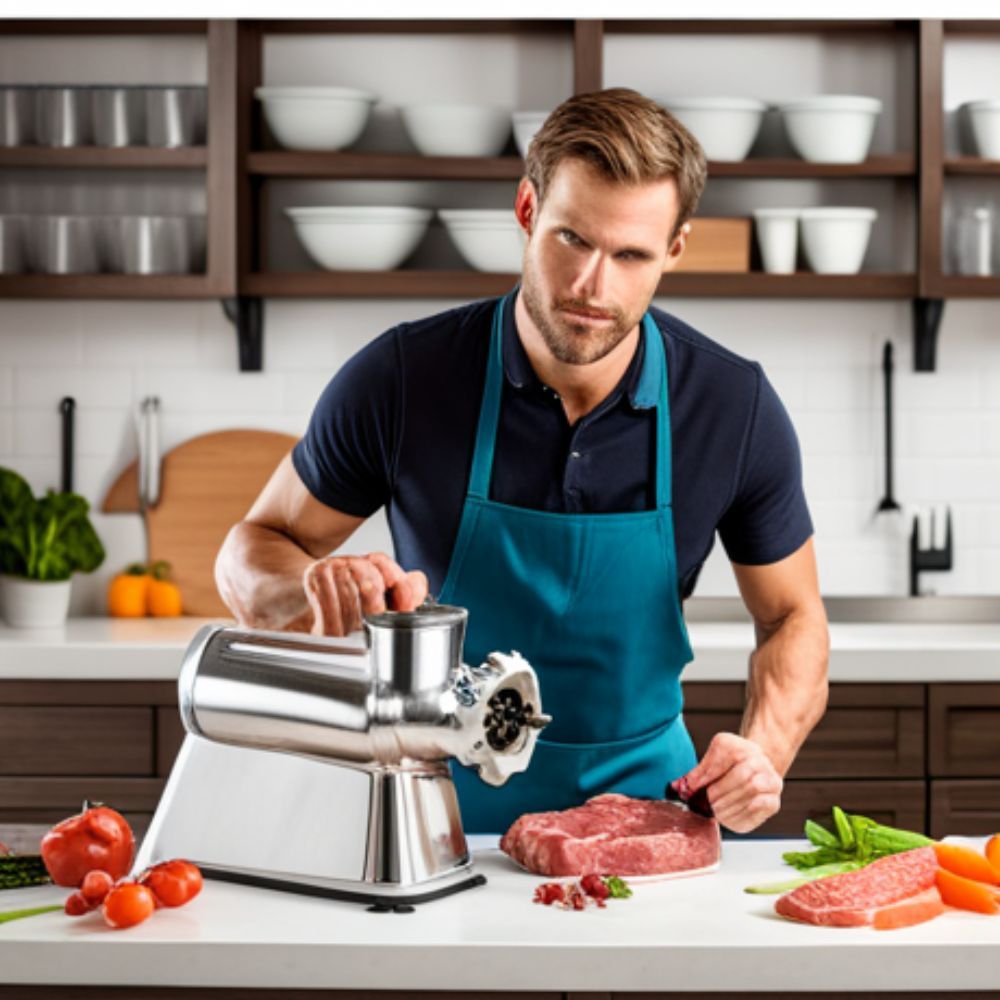
A person using an electric meat grinder to grind meat
There are two main types of meat grinders available: manual and electric. Each type has its own unique features and functions, which we will discuss in more detail below.
In addition to the basic components, there are a variety of attachments and accessories available for meat grinders, such as sausage stuffers and food grinder attachments, to help you explore new recipes and perfect new techniques.
Manual vs. Electric Meat Grinders
Manual meat grinders require manual operation and physical exertion to grind the meat, which can be laborious and time-consuming.
On the other hand, electric meat grinders are powered by electricity and offer increased power and efficiency, allowing for larger quantities of meat to be processed in a shorter period of time.
Manual meat grinders boast a straightforward design with fewer moving parts, reducing the likelihood of breakdowns and making them highly durable and cost-effective.
However, they have a limited grinding capacity in comparison to electric meat grinders.
Attachments and Accessories
Sausage stuffers and food grinder attachments are available for meat grinders, allowing for even more versatility in the kitchen.
Kitchen Aid, for example, offers a variety of food and meat grinder attachments compatible with their stand mixer, which can be used to:
- Process locally-raised meats for sausage using a sausage stuffer
- Grind fruits for chutneys
- Create bread crumbs
- And more.
The primary distinction between a food processor and a meat grinder is their capability to process different types of food, with a meat grinder specifically designed for grinding meat.
Tips for Successful Meat Grinding
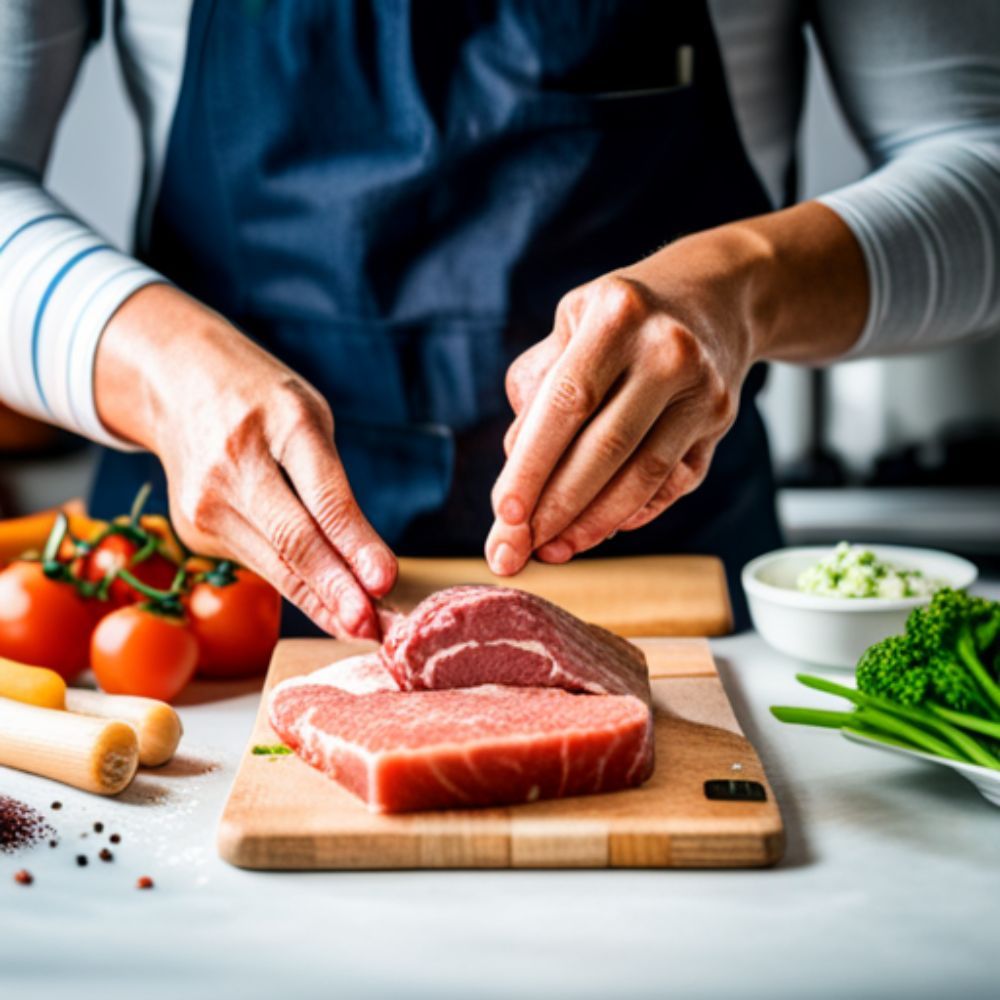
A person preparing meat for grinding in a meat grinder
To achieve the best results when grinding meat, it’s important to properly prepare your meat and maintain your grinder. Here are some tips to follow:
- Chill the meat prior to grinding to ensure an even grind and prevent the growth of harmful bacteria.
- Cut the meat into the appropriate size to fit into the grinder.
- Process the meat in small batches to avoid clogging the grinder.
By following these tips, you can ensure a successful meat grinding process.
Regularly cleaning and lubricating the grinder is also essential for optimal performance. Make sure to make sure.
Preparing Your Meat
Before grinding, clean the pieces of meat and discard any excess fat. Trimming excess fat is essential to ensure a consistent grind and to prevent clogging of the grinder.
It’s also important to remove bones for the security and preservation of the product.
Chilling the meat prior to grinding is essential to guarantee that the meat is ground uniformly and that the grinder does not become blocked.
Maintaining Your Grinder
Proper maintenance of your grinder is key to its longevity and optimal performance.
After each use, it’s recommended to disassemble the grinder and wipe down all parts with a damp cloth to ensure proper cleaning.
Lubricate the auger, blade, and feed tube, which are the moving parts of the grinder, to keep them functioning smoothly.
When storing your grinder, choose a dry and cool environment away from direct sunlight.
Creative Uses for Your Meat Grinder
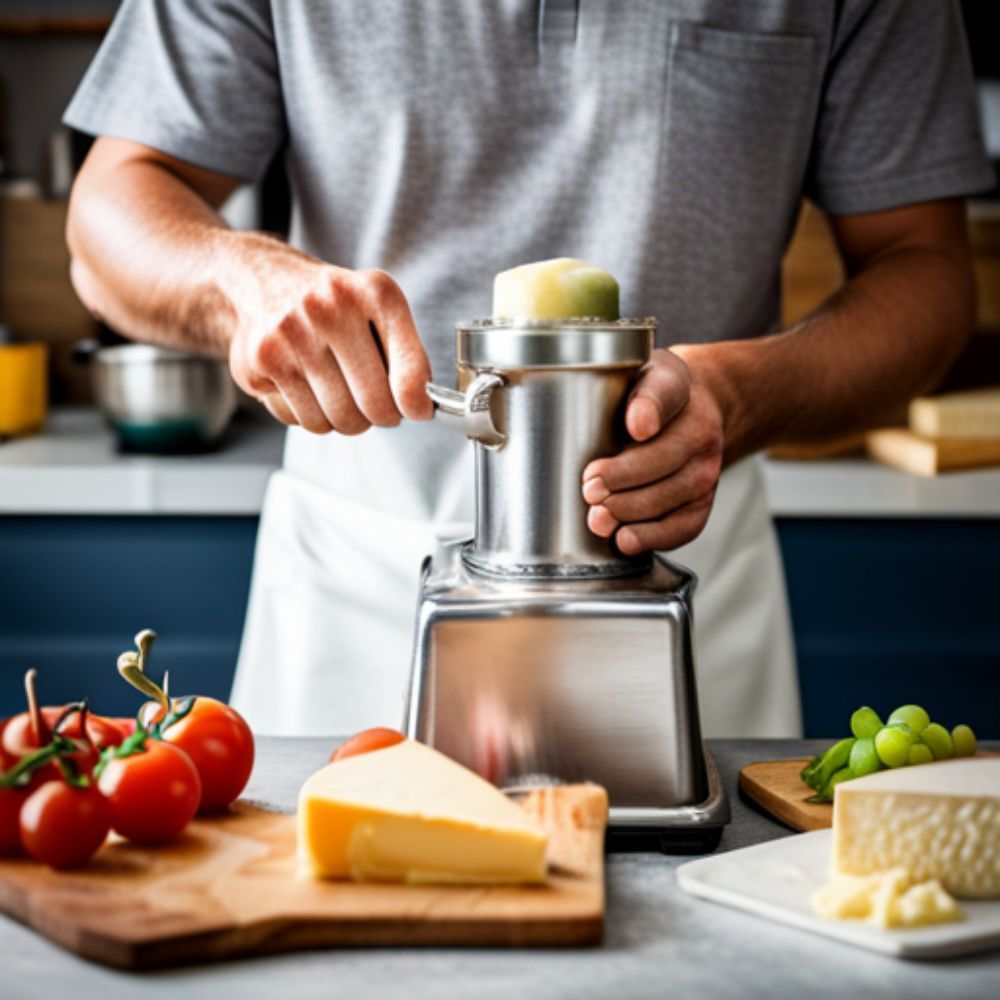
A person using a meat grinder to grind cheese
A meat grinder is not just for grinding meat – it can also be used for a variety of creative culinary applications.
From unique meat blends to non-meat applications, a meat grinder can be a versatile tool in the hands of an adventurous home cook.
It can be used to make homemade sausages, burgers, and meatballs.
Unique Meat Blends
By grinding your own meat, you can create custom meat blends for dishes like burgers, meatballs, and sausages.
For example, combining ground beef and lamb for tagine cooking or easy kabobs, chicken and pork for homemade dim sum, or lean beef with pork for the ultimate burgers.
Utilizing a meat grinder to craft burgers provides the ability to regulate the grind and fat content of the meat, resulting in a perfect patty every time.
Non-Meat Applications
In addition to grinding meat, a meat grinder can also be used to process hard cheeses, vegetables, and breadcrumbs.
This versatility opens up a world of culinary possibilities, from grinding your own Parmesan cheese for a rich pasta sauce to creating vegetable patties for a meatless meal option.
So don’t be afraid to think outside the box and explore the full potential of your meat grinder.
Mozzarella In A Meat Grinder?! - @OmnivorousAdam
Grinding Meat Safely and Efficiently
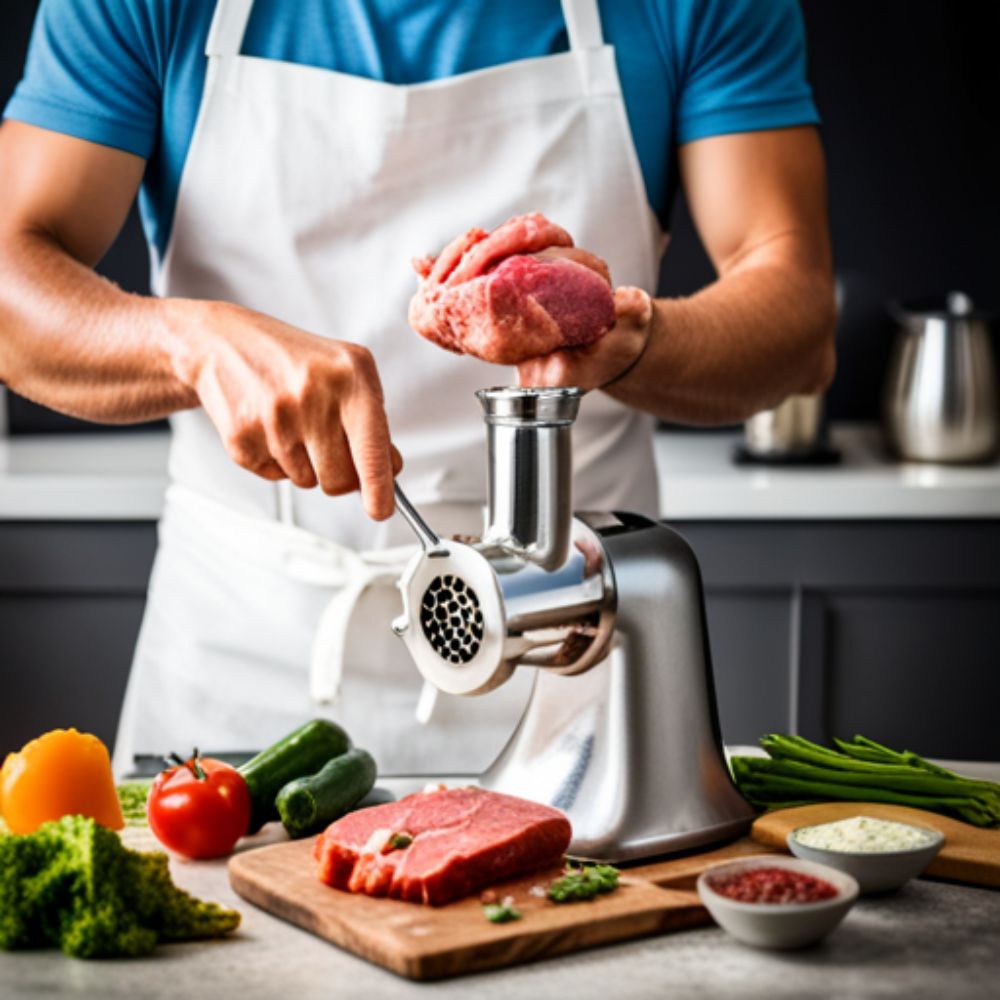
A person using a meat grinder to create unique meat blends
To grind meat safely and efficiently, it’s important to follow some basic safety measures and techniques. These steps will help ensure that your meat grinder operates smoothly and that the meat is processed at the right temperature to avoid the growth of harmful bacteria.
When grinding meat, always wear protective gloves and a face mask to avoid contact with any bacteria.
Grinder Safety Measures
When using a meat grinder, always remember to:
- Inspect the cords for damage
- Keep water and other liquids away from the electric meat grinder to prevent potential fire hazards
- Unplug the machine when it’s not in use
By following these simple safety measures, you can protect yourself and your kitchen equipment while grinding meat.
Preventing Grinder Clogs
To prevent clogs in your grinder, follow these steps:
- Cut the meat into small pieces before grinding. This will prevent overloading the grinder and ensure the meat is ground evenly.
- Use the correct grinder plate size for the type of meat you are grinding.
- Process meat in limited quantities to avoid overloading the grinder and causing clogs.
By following these tips, you can prevent clogs and ensure smooth operation of your grinder.
If the grinder slows down during use, stop and perform a quick clean before continuing.
Summary
In conclusion, grinding your own meat at home offers numerous benefits, from controlling the quality and cuts of meat to experimenting with unique meat blends and non-meat applications.
By understanding the fundamentals of meat grinding, essential components of a meat grinder, and tips for successful meat grinding, you can elevate your home cooking game and impress your friends and family with your culinary skills.
So why not give meat grinding a try and discover the endless possibilities that await you in the kitchen?
Are you in the market for a new quality meat grinder? Check out our article for our top picks.
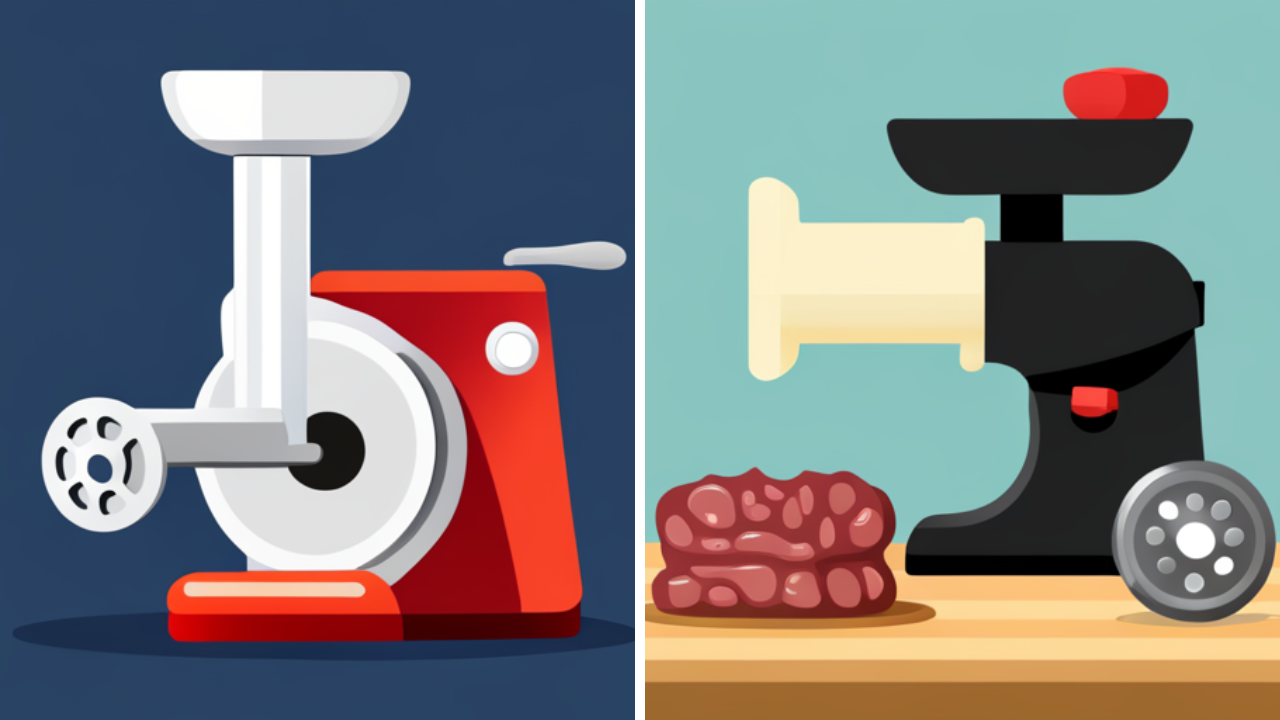
Frequently Asked Questions
What else can I use my meat grinder for?
With a meat grinder, you can grind meats for sausages, patties, ragus, vegetables for veggie burgers, sauces and salsas, nuts, pastas, cheeses and breadcrumbs. Utilize a meat grinder to easily add extra variety to your cooking routine.
How many times should you run meat through a grinder?
For a consistent product, meat should be run through a grinder twice - once for a coarser grind and then again for a finer one.
What is the difference between a meat grinder and a meat mincer?
A meat grinder, also known as a meat mincer in the UK, is a motorized kitchen appliance used for mincing food ingredients into uniformly sized pieces. Meat grinders are mainly used to quickly and efficiently grind large quantities of meat with consistent quality.
In contrast, a mincer is primarily used for manually chopping food ingredients into smaller pieces using a knife or food processor.
How to use a meat grinder?
Use and care for your meat grinder by keeping everything cold, trimming your meat, watching for smearing, keeping your blade sharp and plate clean, grinding from large to small die, and salting the meat accordingly.
Keep your meat cold to ensure that it is easier to grind and that the fat does not melt and smear. Trim the fat off of the meat before grinding to ensure that the fat does not clog the grinder. Watch for smearing, which can occur when the fat melts and coats the meat.
What is the benefit of using a meat grinder over store-bought ground meat?
Using a meat grinder allows for greater control of texture, quality and cuts of meat, as well as the ability to mix different types of meat together, providing a more customized ground meat experience than store-bought alternatives.
This makes it a great choice for those who want to make their own burgers, sausages, and other ground meat dishes. It also allows for more creative recipes, such as adding herbs and spices to the mix for a unique flavor.










